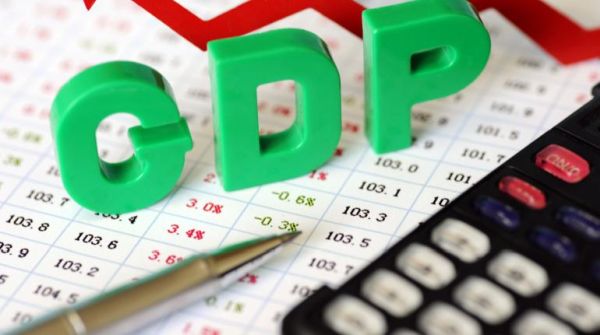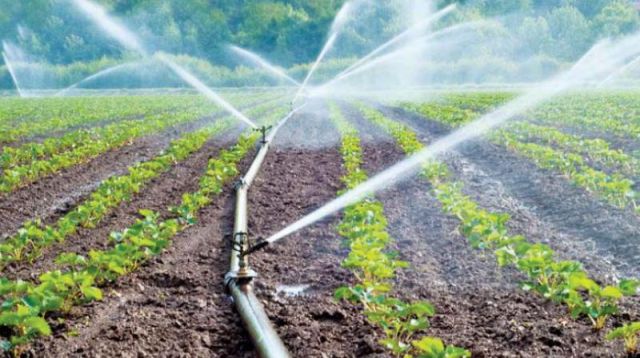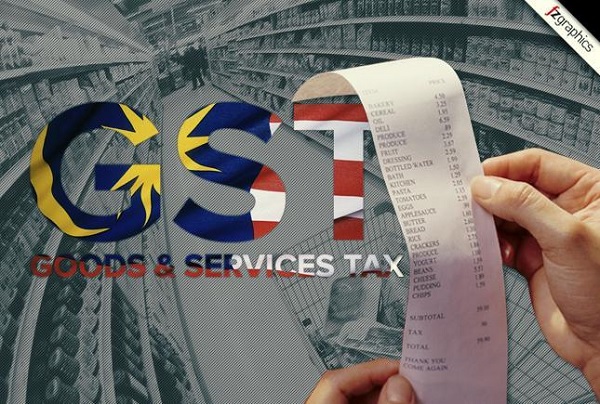
by admin | May 25, 2021 | Opinions
 By Amit Kapoor,
By Amit Kapoor,
It is quite commonplace to hear that India will be an economic superpower in a few decades. However, the current reality is far from it. One cannot deny the abysmal standard of living of our citizens. Indias real Gross Domestic Product (GDP) per capita (at 2010 prices) for 2016 stands at just $1,861.5 while the other BRICS nations — China ($6,893.8), Brazil ($10,826.3), South Africa ($7,503.3) and Russia ($11,099.2) — are higher up on the scale.
Even South Asian economies like Bhutan ($2,801.3), Sri Lanka ($3,759.2) and Maldives ($8,623.9) perform well above India by this measure of standard of living. A straightforward question that arises is: What is it that India seems to misconstrue in the economic game that other players seem to get right and succeed in doing?
Spatial differences in GDP per capita across countries continue to motivate much of growth theory and development economics even today. However, being part of an increasingly knowledge-based world economy, India’s positioning in the global prosperity scenario must be seen and targeted from the national competitiveness angle.
Competitiveness, in effect, isn’t about macro-economic variables like interest rates, exchange rates, deficits or about cheap abundant labour or availability of natural resources or about state policies and management practices — although all these are relevant to any economy. Rather, competitiveness can be defined more purposefully as the productivity of a nation’s factors of production (labour, land and capital) employed during production processes. In purely economic terms, productivity denotes the value of output per unit of input used.
Talking about productivity in policymaking is no recent phenomenon and, at some point, you are bound to quote Nobel Prize-winning economist Paul Krugman who wrote back in the 1990s that “productivity isn’t everything, but in the long run it is almost everything”.
First of all, productivity must not be confused with labour force participation or, for that matter, the output that they produce. A simple example would explain this. Consider a donut-making factory having four workers on eight-hour shifts producing 400 donuts a day — or 100 per worker or 12.5 per hour. An announcement on hiring four more people to boost productivity would suggest that the new workers will produce more donuts per hour than the existing workers.
Remember that productivity is output per hour worked. So, if the new lot of workers were actually slower (producing only 10 donuts per hour) than the existing ones, then productivity will in fact fall. The four new workers will come up with 320 donuts a day and the total output of the eight workers would rise to 720 donuts a day. However, the average per worker per hour is just 11.25 donuts. The net result is an increase in labour force participation and output — but productivity, in essence, has fallen.
Furthermore, if the company wants to make the same profit as before the new hirings, it will have to hike the price of the donuts it sells. So it might end up hurting those who buy the donuts (because they are the ones paying more for them) and ultimately affect their standard of living as well. A clear implication for the short term, in this case, is that the new workers will have to be trained and skilled, and while they are being trained their productivity will be lower than the other workers. Thus, for productivity to rise in the medium to long term, these new workers will have to be skilled better than the current workers by using updated and innovative practices so that output rises in an even more greater proportion and be reflected in the high and increasing standard of living of all the citizens.
Going back to Krugman’s words, productivity then is not everything — the well-being of citizens is; which, interestingly and inherently, is dependent on productivity levels in the overall economy.
Firms, apart from being productive domestically, have to undergo the sheer pressure and challenge of being innovative and up to date in order to attain a global competitive edge as well. This is because international trade and foreign investment have the power to allow companies to specialise in industrial segments that are more productive and become global game-changers. The fact that certain firms in specific industries are able to create and sustain real as well distinct advantages for themselves reflects nothing but the productivity gains that help any economy maintain a higher standard of living for its citizens.
Productivity growth has never really topped the list of issues of policymakers in India, even though productivity growth matters more for emerging market economies than for the advanced world. Trends indicating slow growth in productivity levels across major sectors of our country — and being nowhere close to high-performing economies — do provide strong motivation to rethink our approach since it is sustained productivity growth that can raise living standards over the long run: If workers produce more per hour, there is more of output and income to share and hence more reasons to celebrate.
(Amit Kapoor is chair, Institute for Competitiveness, India and can be contacted at amit.kapoor@competitiveness.in and tweets @kautiliya. Bhawna Kakkar, researcher, Institute for Competitiveness has contributed to the article.)
—IANS

by admin | May 25, 2021 | Economy, Markets, News
 New Delhi : In line with the earlier official estimate of the country’s GDP growth in the last fiscal, demonetisation-hit India’s gross domestic product during 2016-17 grew at 7.1 per cent, Central Statistics Office (CSO) data showed on Wednesday.
New Delhi : In line with the earlier official estimate of the country’s GDP growth in the last fiscal, demonetisation-hit India’s gross domestic product during 2016-17 grew at 7.1 per cent, Central Statistics Office (CSO) data showed on Wednesday.
According to the CSO’s first revised estimates of national income released on the eve of the Union Budget for the next fiscal, growth last year came in lower than the 8.2 per cent rate for 2015-16. This has been revised upwards from its provisional estimate of 8 per cent.
In terms of Gross Value Added (GVA), which excludes taxes while including subsidies, the revised estimates showed a lower growth at 7.1 per cent for 2016-17, also as compared to the 8.1 per cent real GVA growth registered for 2015-16. The GVA estimate has, however, been revised upwards from the earlier provisional estimate of 6.6 per cent.
The revised estimates take into account a wider range of numbers, including employment data.
The nominal GDP, or that at current prices, for 2016-17 has been revised down to 10.8 per cent from 11 per cent estimated earlier. For the previous year, nominal GDP has been pegged at 10.4 per cent.
The Indian economy had grown at its fastest since 2011 to reach 8.2 per cent growth during 2015-16.
On the most disruptive measure since Independence — demonetisation, which, along with GST, “decoupled” the Indian economy from the rest of the world for around four to six quarters — the Finance Ministry’s Economic Survey 2017-18, released on Monday, said that carrots rather than sticks should be the mainstay of government policy in cleaning up the economy.
Meanwhile, data on India’s eight core infrastructure industries for December also released on Wednesday, showed a sharp fall in growth at 4 per cent, as against 7.4 per cent in November.
—IANS

by admin | May 25, 2021 | Opinions
 By Taponeel Mukherjee,
By Taponeel Mukherjee,
The “Policy for Repowering of the Wind Power Projects” announced by the Ministry of New and Renewable Energy in August 2016 was a step in the right direction. Now is the time for global investors to pay more attention to wind-turbine repowering investment opportunities in India to take a grip on a growing renewable energy market.
This is even more important given that, according to a recent IMF report, India’s GDP growth is projected to rise to 7.4 per cent in 2018-2019 and 7.8 per cent in 2019-2020, which will place a significant demand on energy pitched against rising oil prices and depleting reserves. Policymakers, in turn, need to look at ways and means to build on the existing policy framework that will boost wind energy investments through repowering of wind-turbines in India.
Wind-turbine technology has witnessed a significant improvement over the last two decades. In India, most of the wind-turbines installed prior to 2000 have a capacity that is below 500kW. The “Policy for Repowering of the Wind Power Projects” allows turbines of 1 MW or below to be eligible for repowering under the policy.
These repowering projects are not only eligible for an additional interest rate rebate of 25 basis points on loans from the Indian Renewable Energy Development Agency (IREDA) but are also eligible for all fiscal and financial benefits available for new wind projects. Investors looking at the Indian renewable energy sector must seize this opportunity. Further government incentives can provide a significant boost to the wind-turbine repowering sector.
Identifying high-quality assets suitable for repowering will be the key to a successful investing strategy. It will be important to analyse at a site level whether repowering of the wind-turbine has any economic benefit. Does the site have the wind potential to justify larger and more efficient turbines? This analysis will provide investors with access to sites that do have significant potential, since we believe that the initial wind developments would have generally happened at the better sites.
This ability to identify high quality wind assets will be crucial. In further analysis, the investor will have to identify whether repowering would have financial benefits over and above simply paying the operations and maintenance costs associated with the current turbines. Additionally, the investor will have to analyse whether the requisite transmission mechanism exists for the end user to be able to consume the extra energy.
For wind sites that meet the foregoing criteria it is possible for investors to identify and access financially viable wind-turbine repowering projects. In addition to wind projects that are fully financially feasible, government incentives available and potential positive regulations in the future can make additional projects viable. Global investors keen on entering the Indian renewable energy sector must engage with local players to identify where valuable wind energy assets are.
Repowering wind-turbines is the equivalent of generating new wind assets. Financially viable projects using the framework above have potential for significant value generation. In addition, repowering of wind-turbines also provides investors the opportunity to create investment platform structures to aggregate wind energy assets. The investors can look to not only enter repowering agreements but also to own these assets. All the above reasons make repowering of wind-turbines an investment opportunity that warrants greater attention from the global investor community.
The “Policy for Repowering of the Wind Power Projects” was a right move, but the time has come for Indian policymakers to up the ante in the wind energy sector. First and foremost, for repowering of wind-turbines to generate additional energy from an operational point of view, the transmission mechanism to transfer the energy to the end-user must exist. Transmission line investments and policies must move hand in hand with repowering of wind-turbine policies.
For India to emerge as the hub of wind energy investments globally, it is important for more investor-friendly tax policies in the wind energy sector, especially around wind-turbine repowering. The government should allow for high percentage of accelerated depreciation for wind-turbine repowering projects. Such a tax incentive will help boost the renewable energy ecosystem by encouraging investments.
In summary, India needs to not just reach its renewable energy target, but also ensure that its renewable energy resources are utilised to the maximum extent. Making investments economically feasible with effective policies and tax incentives will have social benefits above and beyond the economic benefits.
(Taponeel Mukherjee heads Development Tracks, an infrastructure advisory firm. He can be contacted at taponeel.mukherjee@development-tracks.com or @taponeel on Twitter)
—IANS

by admin | May 25, 2021 | Business, Commodities, Commodities News, Corporate, Corporate Governance, Large Enterprise
 New Delhi : Following release of the Advance Estimate (AEs) of GDP and GVA for the economy for 2017-18, the Ministry of Agriculture and Farmers’ Welfare on Sunday said that the agriculture sector is estimated to register a higher GVA in the next financial year.
New Delhi : Following release of the Advance Estimate (AEs) of GDP and GVA for the economy for 2017-18, the Ministry of Agriculture and Farmers’ Welfare on Sunday said that the agriculture sector is estimated to register a higher GVA in the next financial year.
As per data released by the Central Statistics Office, the GVA of ‘Agriculture, Forestry and Fishing’ index for 2017-18 was estimated at 2.1 percent, compared to 4.9 percent in the preceding year.
The ministry has had a quick deliberation on the growth rate for the agriculture sector to strategize on ensuring that 2017-18 sees a much higher growth rate, said an official statement.
According to the statement, lower coverage of the area by August 2017 on account of the delayed onset of monsoons caused a poor reflection compared to the actual positive field situation by December, and despite a lower or negative share of crop sector in the GVA computation of Agriculture, based on August 2017 status, the growth rate still worked out to 2.1 per cent.
The ministry also said that it is also important to note that the Advance Estimate for the year 2017-18 comes on the back of a very robust GVA of 4.9 per cent in the previous year.
While coverage under different crops in Kharif as of August 2017 was below that of the previous year on account of delay in onset of monsoons in some parts of the country, good rainfall thereafter helped the ministry in increasing the area coverage in accordance with Kharif targets.
In terms of Rabi, the ministry said it was optimistic about achieving a high growth rate due to improvement in the performance.
“As on January 5, 2018, the area coverage under Rabi is 58.6 million hectares, which is very good progress. Considering that the Rabi sowing continues up to the first week of February, the total area under crops and resultant production will be very good,” it said.
Further, the ministry expects to consolidate the record production achieved during 2016-17, by focusing on higher productivity. The credit made available for the year 2017-18 is as high as Rs 10 lakh crore, compared to Rs 9 lakh crore in 2016-17.
—IANS

by admin | May 25, 2021 | Economy, Markets, News, Politics
 New Delhi : Implementation of GST and subsequent slowdown in the manufacturing sector is expected to drag down India’s growth to 6.5 per cent in 2017-18, official data showed on Friday.
New Delhi : Implementation of GST and subsequent slowdown in the manufacturing sector is expected to drag down India’s growth to 6.5 per cent in 2017-18, official data showed on Friday.
India’s projected economic growth rate for 2017-18 will be lower than the 7.1 per cent achieved in 2016-17.
According to Chief Statistician T.C.A. Anant, the de-stocking disruption caused due to the GST implementation has impacted the full-year Gross Domestic Product (GDP) estimates.
The estimate of national income for 2017-18 released by the Central Statistics Office (CSO), the GDP at constant (2011-12) prices for 2017-18 is likely to attain a level of Rs 129.85 lakh crore.
“The growth in GDP during 2017-18 is estimated at 6.5 per cent as compared to the growth rate of 7.1 per cent in 2016-17,” the Ministry of Statistics & Programme Implementation said in its estimate of National Income for 2017-18.
Earlier, the country’s GDP growth for the second quarter of the current fiscal ended September 30 was 6.3 per cent — up from 5.7 per cent reported during the first quarter of 2017-18.
The CSO has primarily used seven-month data to extrapolate for the full fiscal.
As per the data, the Gross Value Added (GVA) at basic constant prices (2011-12) is anticipated to increase from Rs 111.85 lakh crore in 2016-17 to Rs 118.71 lakh crore in 2017-18.
“Anticipated growth of real GVA at basic prices in 2017-18 is 6.1 per cent as against 6.6 per cent in 2016-17.”
The data disclosed that sectors like ‘public administration, defence and other services’, ‘Trade, hotels, transport, communication and services related to broadcasting’, ‘electricity, gas, water supply and other utility services’ and ‘financial, real estate and professional services’ registered a growth rate of over 7 per cent.
On the other hand, growth in the ‘agriculture, forestry and fishing’, ‘mining and quarrying’, ‘manufacturing’ and ‘construction’ sectors “is estimated to be 2.1 per cent (from 4.9 per cent), 2.9 per cent (from 1.8 per cent), 4.6 per cent (from 7.9 per cent) and 3.6 per cent (from 1.7 per cent)”, respectively.
—IANS





